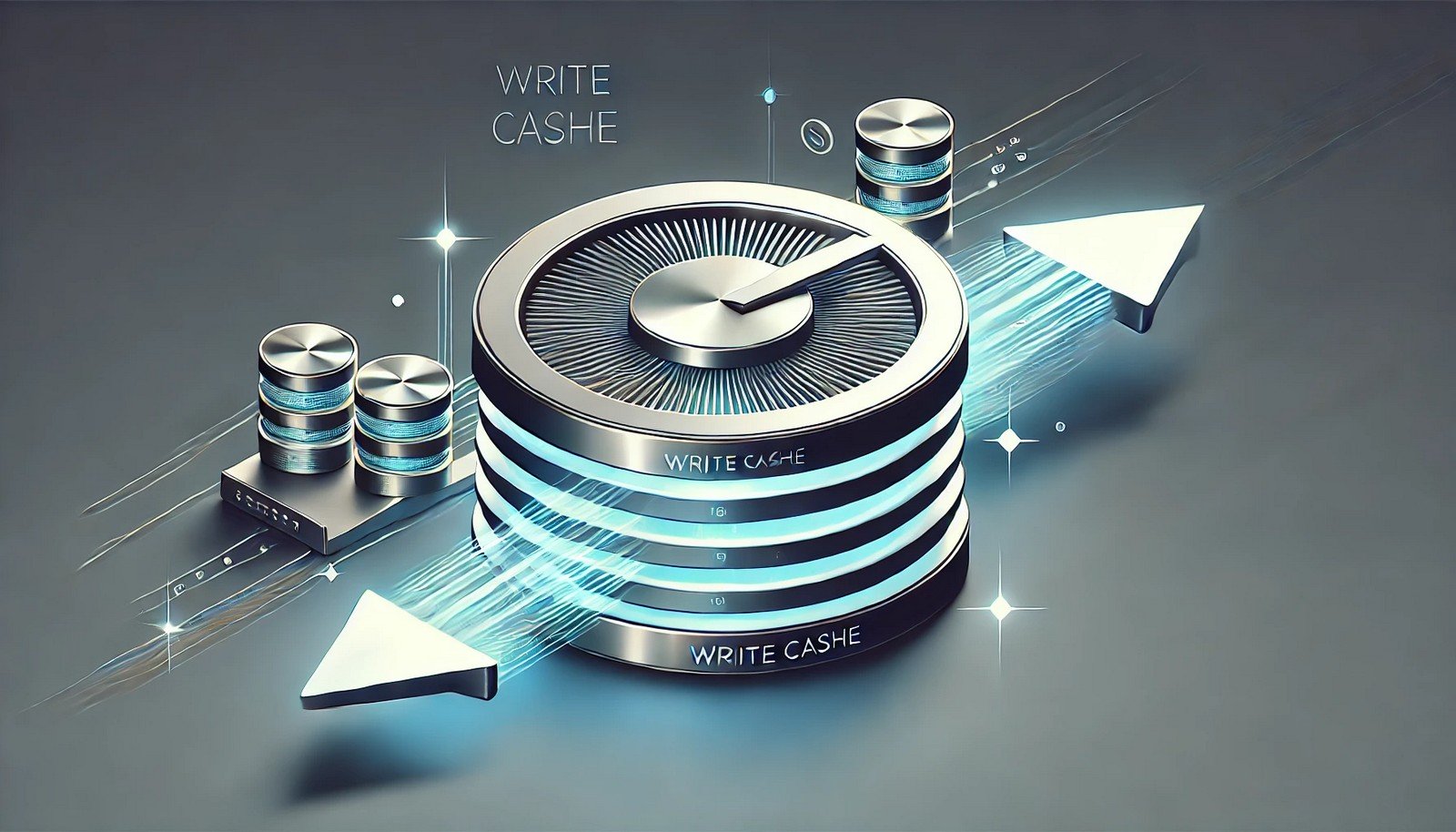Write Cache

(Representational Image | Source: Dall-E)
Quick Navigation:
- Write Cache Definition
- Write Cache Explained Easy
- Write Cache Origin
- Write Cache Etymology
- Write Cache Usage Trends
- Write Cache Usage
- Write Cache Examples in Context
- Write Cache FAQ
- Write Cache Related Words
Write Cache Definition
A write cache is a high-speed buffer used to temporarily store data before it is written to slower permanent storage. It enhances system performance by allowing write operations to complete quickly while deferring actual disk writes to a later time. However, a sudden power failure can cause data loss if the cached data has not been written.
Write Cache Explained Easy
Think of a write cache like a waiting room where data sits before it gets stored on a hard drive. Instead of immediately running to put books on a shelf, you first place them in a box and take them all at once. This makes things faster, but if the box spills before reaching the shelf, you might lose some books.
Write Cache Origin
The concept of caching in computing has existed since the early days of storage devices. Write caching became more important in the 1980s when hard drives lagged behind CPU speeds, necessitating efficient data handling.
Write Cache Etymology
The term "cache" originates from the French word cacher, meaning "to hide or store." In computing, a cache is a temporary storage layer for faster data access.
Write Cache Usage Trends
With advancements in storage technology, SSDs and NVMe drives employ sophisticated write caching mechanisms. Cloud storage systems also use distributed write caching to optimize synchronization and performance.
Write Cache Usage
- Formal/Technical Tagging:
- Storage Optimization
- Data Caching
- Disk Performance - Typical Collocations:
- "Enable write cache"
- "Write cache policy"
- "Battery-backed write cache"
- "Write-through vs. write-back cache"
Write Cache Examples in Context
- A write cache helps improve SSD performance by reducing the number of direct writes to the storage cells.
- In a database system, write caching speeds up transactions by temporarily storing changes before committing them to disk.
- Enabling write caching on a RAID controller enhances file transfer speeds but requires backup power to prevent data loss.
Write Cache FAQ
- What is a write cache?
A write cache is a temporary buffer where data is stored before being written to permanent storage. - How does write caching improve performance?
It allows the system to acknowledge write operations instantly while delaying the actual storage process. - What are the risks of write caching?
Sudden power loss can lead to data loss if cached data is not written to storage. - What is the difference between write-through and write-back caching?
Write-through caching writes data immediately, whereas write-back caching delays writing for efficiency. - Can write caching be disabled?
Yes, most operating systems allow users to enable or disable write caching. - How do SSDs use write caching?
SSDs use DRAM or SLC cache to temporarily store writes, improving speed and reducing wear. - Do all storage devices have write caching?
No, but most modern storage devices implement some form of write caching. - Is battery-backed write cache important?
Yes, it prevents data loss by keeping cached data safe during power failures. - How does write caching affect database performance?
It speeds up transactions but requires careful management to ensure data integrity. - Are there software-based write caches?
Yes, operating systems and applications implement software-driven caching for efficiency.
Write Cache Related Words
- Categories/Topics:
- Computer Storage
- System Performance
- Data Processing
Did you know?
In 2018, a cloud provider experienced massive data loss due to a firmware bug in write cache management, emphasizing the importance of redundant caching systems.
PicDictionary.com is an online dictionary in pictures. If you have questions or suggestions, please reach out to us on WhatsApp or Twitter.Authors | Arjun Vishnu | @ArjunAndVishnu

I am Vishnu. I like AI, Linux, Single Board Computers, and Cloud Computing. I create the web & video content, and I also write for popular websites.
My younger brother, Arjun handles image & video editing. Together, we run a YouTube Channel that's focused on reviewing gadgets and explaining technology.



Comments powered by CComment